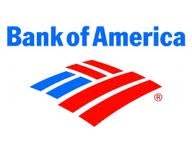Sometimes the worst wounds are invisible, at least in Bank of America Corp (NYSE:BAC)‘s case. Take one look at the megabank’s balance sheet, and you’ll be hard pressed to identify where all of its losses are coming from. The nation’s second largest bank with over $2.2 trillion in assets earned only $4.1 billion last year. And that was despite the fact that it recorded $83.3 billion in interest and fee income. What gives?
The answer is two-fold. First, as I discussed at length in a series on B of A’s legal problems, the bank continues to record tens of billions of dollars in off-balance sheet liability from lawsuits related to the sale of mortgages and mortgage-backed securities prior to the financial crisis. Most recently, it paid Fannie Mae $3.6 billion in cash and repurchased $6.6 billion in toxic mortgages that Countrywide Financial had previously sold to the government-sponsored agency.

When a bank underwrites a mortgage, the loan is rarely retained on the lender’s books. It’s instead sold on the secondary market to Fannie Mae or Freddie Mac who then securitize it with other loans for an even later sale to institutional investors. At the time of the original sale, however, the lender that originated the loan typically retains the right to service it for a small fee — usually somewhere between 0.25% and 0.375% of the loan’s principal plus late fees. This is where MSRs come into the picture, as they represent the value of the rights retained.
You’re probably beginning to see at this point how such a small entry on a bank’s balance sheet could exert inordinate pressure on its bottom line. With respect to Bank of America Corp (NYSE:BAC) specifically, at the end of last year, the $5.8 billion in MSRs related to a staggering $1.05 trillion in mortgages, the vast majority of which were originated by Countrywide Financial between 2004 and 2008. This puts B of A second in terms of third-party servicing portfolios, behind only Wells Fargo (NYSE:WFC) and “ahead” of both JPMorgan Chase (NYSE:JPM) and Citigroup .

Source: Company filings.
Now, don’t get me wrong. MSRs aren’t necessarily bad. Just ask Wells Fargo, which records billions of dollars in servicing income every year as a result of them.
But in Bank of America Corp (NYSE:BAC)’s case, the problem is that wide swaths of the underlying loans have since either gone into default or are well on their way there and, as a result, are increasingly expensive to service. In 2012, the operating segment responsible for servicing mortgages at B of A lost $11.4 billion before taxes. While this was better than the $30.5 billion that it lost in 2011, it’s nevertheless an outlier compared to the gains in the other operating units — as a side note, B of A’s non-operating administrative division, known internally as “ALM,” is excluded from discussion here, though it lost $9.5 billion before taxes primarily because of litigation expenses.




